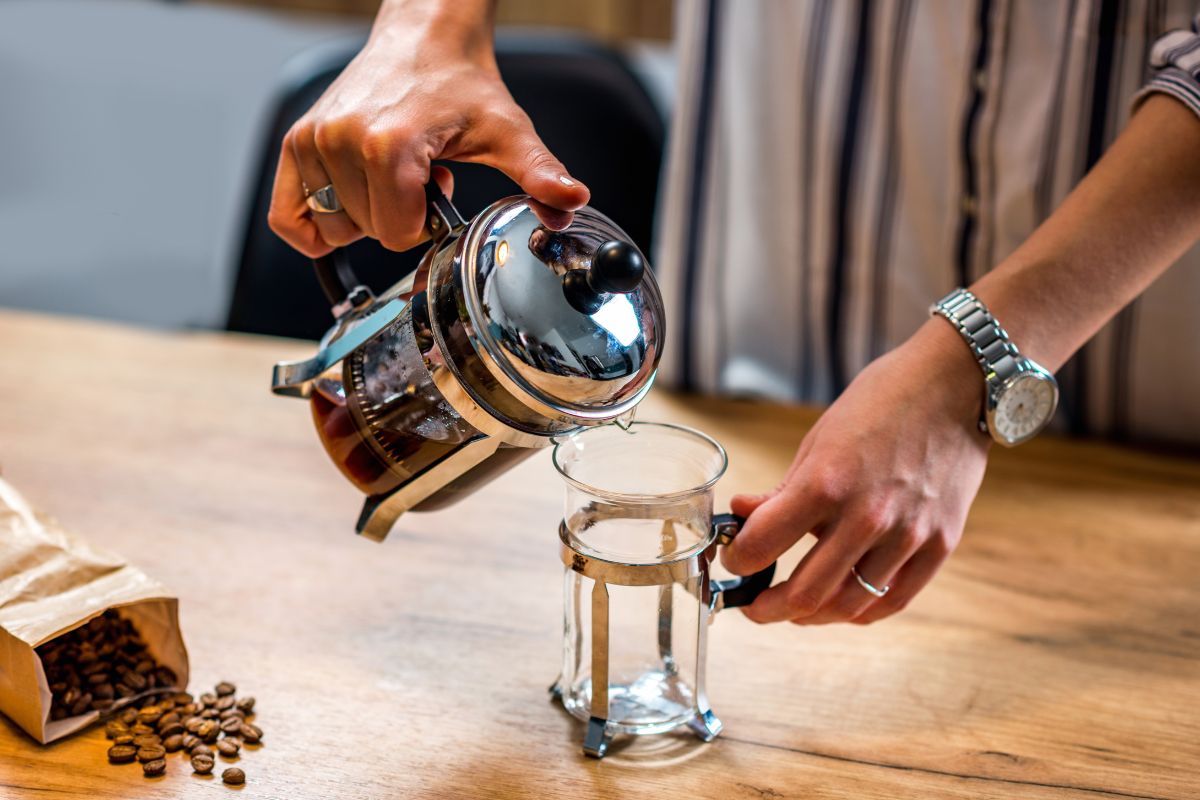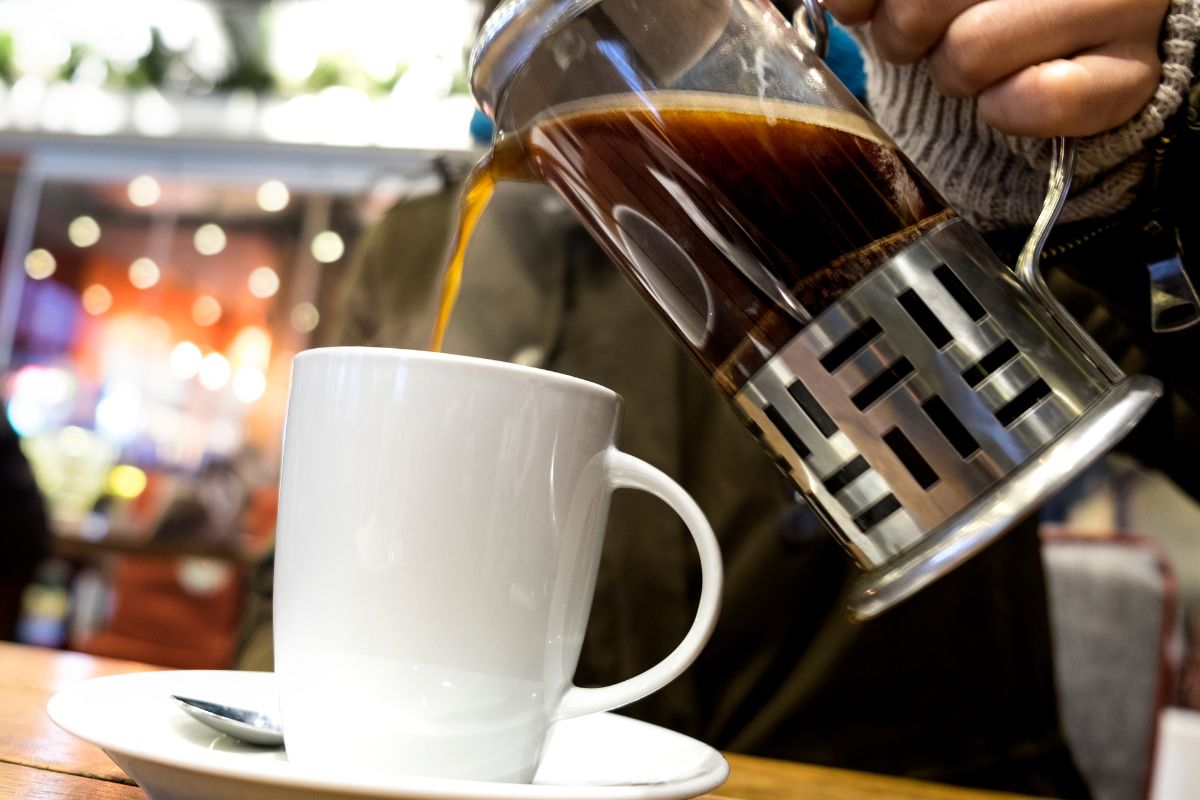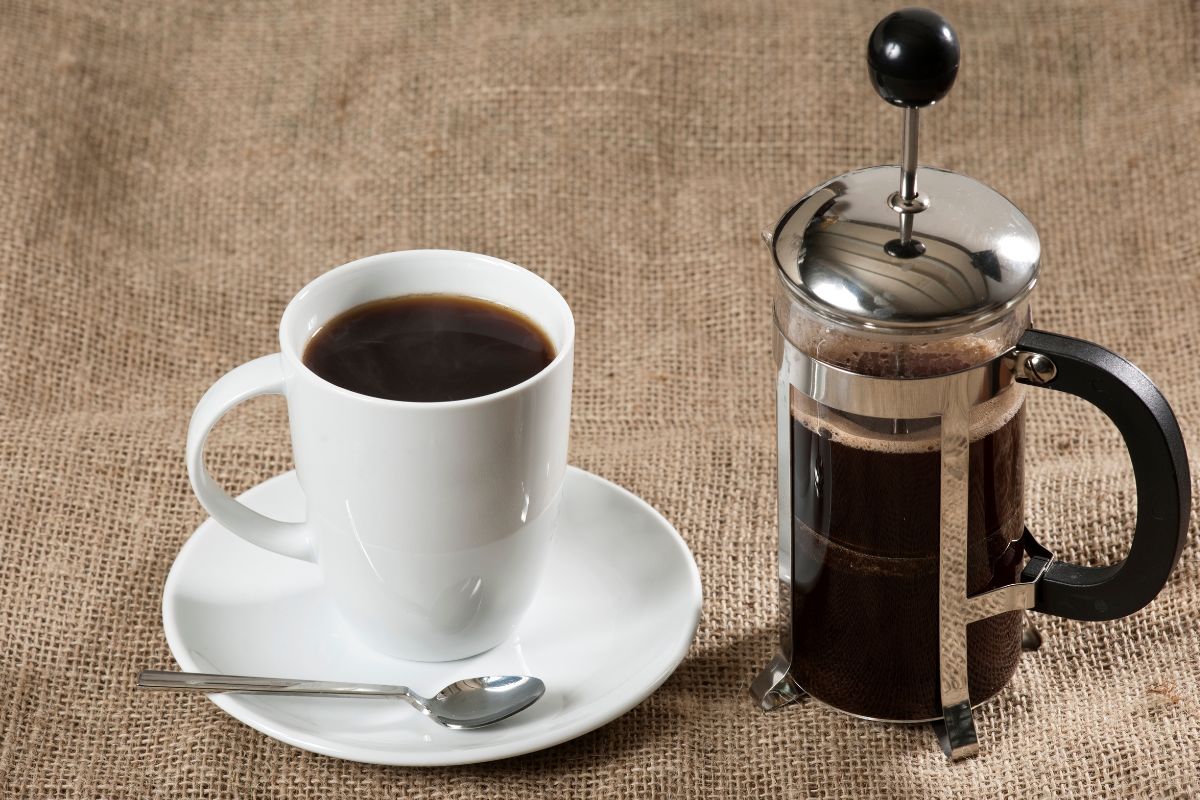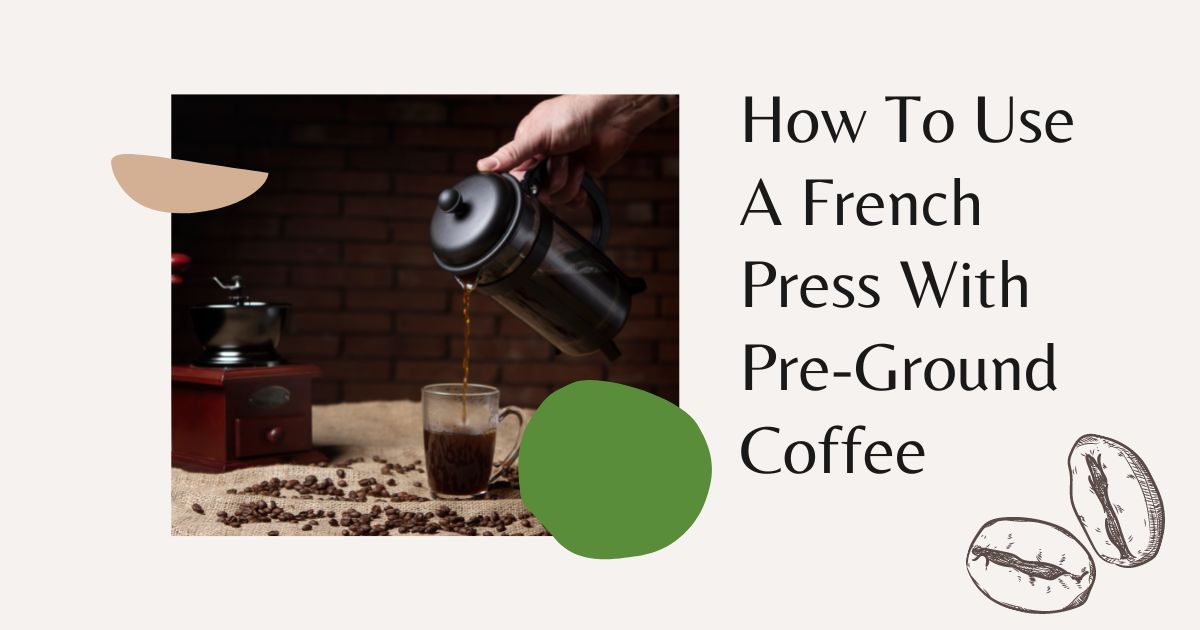What is a French Press?
If you are a coffee lover interested in how to use a french press with pre-ground coffee, we have you covered. So what is a French press?
A French press is a gadget used to make coffee and is also known as a press pot, coffee press, or coffee plunger.
In this article, we discuss how to use a French press to make coffee using pre-ground coffee within a few minutes.

How Does French Press Coffee Taste?
The taste of coffee is per personal preference; however, coffee made with a French press has a flavor that sets it apart from coffees made by other coffee makers.
The French coffee press process does not use a paper filter; therefore, the oils and fats from the beans remain, resulting in a rich and bold brew.
Other factors that will influence the taste of the coffee, such as the water temperature, the coffee-water ratio, and the type of coffee used.
The Ideal French Coffee Ratio
Each person will make coffee based on their individual taste. The ideal French press coffee ratio is one part coffee to fifteen parts water. The ratio, however, should not deter you from trying different ratios for your desired taste.
How to Use a French Press With Pre-Ground Coffee
The question, can you use pre-ground coffee in a French press, is common, especially for new users. The French press is easy to use; you need coarsely ground coffee beans and water.
Start by adding the pre-ground coffee to the carafe. Boil water and allow the water to stand for about a minute, then pour hot water over the coffee beans and leave to stand for a few minutes for the coffee to steep.
Then using the plunger, push the coffee beans to the bottom of the carafe, separating the coffee from the liquid. Serve the coffee in your mug and enjoy.
How Does a French Press Work?
Before understanding how to use a French press, let us know the components. The French press has two parts, the top part, which is the lid, plunger, and a metal filter. The metal filter allows coffee oils to pass through when the plunger when pressed down.
The bottom part is the carafe made of either glass, plastic, or metal with a handle. The carafe is the part where you place the ingredients, and the coffee is left to brew.
So how does a French press work? A French press coffee is a full immersion of coffee beans in water and allows the coffee to be steep. When the steeping is complete, you press down the plunger. The attached metal mesh will separate the coffee grounds from the liquid, releasing all the flavors and oils for a delicate cup of coffee.
Our Pre-Ground French Coffee Recipe
We have tried a few things, and here is our pre-ground French coffee recipe for a delectable cup of coffee.
You will need the following ingredients
- 4 tablespoons pre-ground coffee
- 15 ounces (430 milliliters) Water
- Creamer (optional)
- Sweetener (optional)
Here are the step-by-step French press instructions for making coffee using pre-ground coffee
Firstly boil the water in your kettle and let the water sit for about a minute.
Then measure and place your pre-ground coffee in the carafe, pour water over the coffee beans, and allow to steep for 3 to 4 minutes. Your measurements should be one part coffee for fifteen parts water.
Using the plunger, slowly press the coffee beans to the bottom to separate the beans and the coffee.
Decant and serve; if you have any leftover coffee, transfer it to another carafe as the coffee will continue brewing which will result in over-extracted.
Most people enjoy black coffee, but you can add cream or a sweetener like honey to taste.

Top Tips for Making French Press With Pre-Ground Coffee
When you brew coffee, you want it to have the best taste possible. There are many ways to achieve a great-tasting cup of coffee, and here are some of the top tips we have found useful when using a French press with pre-ground coffee.
- Water temperature matters. The ideal French press water temp for making your coffee is 195 to 205 degrees Fahrenheit (90.5 to 96.1 degrees Celsius). It is important to leave the water to cool a bit before pouring over the beans. Coffee made in a French press using extremely hot water is over-extracted and will have a bitter taste. When this happens, cool your water further.
- Avoid over-extraction by decreasing the amount of coffee if you experience over-extraction or a bland taste. Almost 30 percent of coffee beans are soluble. Pre-ground beans are small and fine, so these soluble components dissolve faster. Monitor how long you allow your coffee to sit before decanting.
- Sometimes your coffee appears weak and watery and is called under-extracted coffee. When this happens, add more coffee and let the coffee sit longer.
- How long to let the French press stand matters. The process called steeping allows the water to absorb the coffee. The steeping time will determine if the coffee is bitter and if this happens, reduce the steeping time for a light taste.
- Change the brewing time to get the coffee to your taste. How long to let the french press sit will determine the taste of your coffee. To make a nice cup of coffee, you should sit your coffee for at least four minutes before plunging. The process called steeping allows the water to absorb the coffee.
- Pour the water faster if you want a butter taste, and pot slowly for a much lighter taste.
- Medium or dark coffees are the best as they contain many oils that contribute to the taste of the coffee. The pre-ground coffee must be coarse for a rich brew.
The Pros and Cons of Using Pre-Ground Coffee in a French Press
The choice to use pre-ground coffee instead of whole coffee beans is a matter of personal preference. There are advantages and disadvantages to this, as listed below:
Pros
- Quick and easy to make. Brewing coffee using pre-ground coffee is easy and convenient. When you have whole coffee beans, you must grind them before placing them in the French press. The grinding adds at least 5 minutes to the coffee-making process. With pre-ground coffee, the process takes about 4 minutes.
- You can easily master the art of making coffee to a consistent taste, irrespective of how many times you make the coffee. Once you have brewed your coffee a few times, you can make the same tasting coffee each time.
- A French press is portable and does not need plugging into an electrical outlet.
- You can make the exact amount of coffee that you need. A French press is usually small and compact and makes a minimum of four cups of coffee. When using a French press, there is an exact ratio per cup that you can follow, and this reduces wastage.
Cons
- Compared to other coffee makers, you will get varying tastes of coffee with each brew. Unless you strictly measure the ingredients and temperature, the coffee will taste differently.
- There are high chances of over-extraction of the coffee resulting in bitter-tasting coffee. It would be best if you were on top of the brewing steps, especially during steeping time.
- Filtered coffees do not have remnants of the coffee beans at the bottom of the mug, which usually remains when you make coffee using a French press. These remaining particles are called coffee sludge and make the coffee from a French press delicious.
- Cleaning up is a hassle compared to coffee makers that use a filter. You have to scoop and scrap the bottom of the French press and ensure there is no tedious layer build-up.
- Compared to other coffee makers, owning a French press will save you money as you do not need to replace filters or other disposable parts constantly.
- Some have pointed out that pre-ground coffee does not have the same aroma as grinding your coffee beans.

A Final Word
A French press is one of the easiest ways to make a deliciously rich and bold cup of coffee.
Knowing how to make french press coffee is simply adding hot water to pre-ground coffee, waiting for a few minutes, and then plunging to separate the coffee from the liquid.
Using pre-ground coffee beans will result in better-tasting coffee than using whole coffee beans due to the extraction of the coffee from the beans after plunging.

